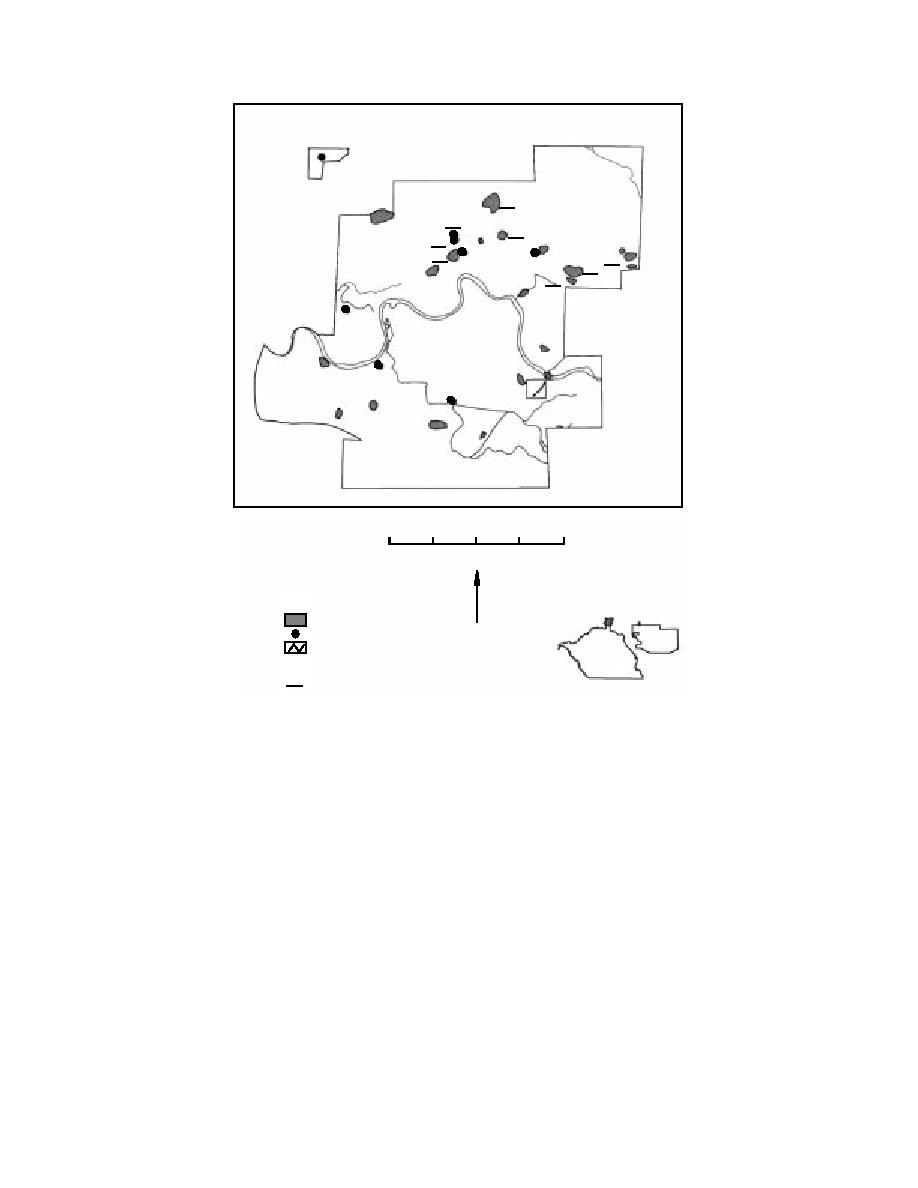
Fairbanks Permafrost
Experimental Station
92
10
29
42
Sage Hill
61
62
Birch Hill
63
21
48
45
23
11
20
15
28
20c
24
50
33
Chena River
19
1
58
46
60
57
59
66
75
27
76
1
0
1
2
3 Kilometers
N
Map Area
Legend
Inventory Areas
Inventory Points
Inventory Lines
27
Vascular Site Number
27
Cryptogam & Vascular Site Number
Figure 16. Locations of floristic inventory sites in the cantonment area of FWA.
lies (of which three stand out in importance:
installation. Nomenclature for vascular plants fol-
Peltigeraceae, Cladoniaceae, and Parmeliaceae), 66
lows that used by the Herbarium of the Univer-
genera, and 109 identified species, or 115 when
sity of Alaska Fairbanks.
infraspecific taxa are included.
Hepatics, or liverworts, which are usually incon-
Cryptogam collections
spicuous and scattered, were little studied; about
About 218 cryptogam taxa (species and subspe-
13 families, 20 genera, and 11 common or conspicu-
cies) were collected and identified, including 115
ous species have been identified.
taxa of lichens, 11 taxa of hepatics, and 91 taxa of
The moss records include 30 families, with
mosses, listed in Appendix E. Most of these are
Sphagnaceae the most frequently recorded group,
common ground-inhabiting species. Nomencla-
followed by Amblystegiaceae and Dicranaceae.
ture follows the most recent North American
checklists: Esslinger and Egan (1995) for lichens,
About 75 genera and 95 species were identified.
Stotler and Crandall-Stotler (1979) for hepatics,
Appendix F provides a list of the major ground-
Anderson (1990) for Sphagnum species, and Ander-
inhabiting lichens and mosses in each of several
son et al. (1990) for mosses (see List of References
habitats on Fort Wainwright. These habitats in-
Useful for the Identification of Boreal Cryptogams
clude disturbed sites, fens, lake and pond margins,
at the end of this report).
wet sedge meadows, and peatlands, including
The lichen collections represent about 30 fami-
treed peatlands, forests, steppe, and tundra.
15



 Previous Page
Previous Page
